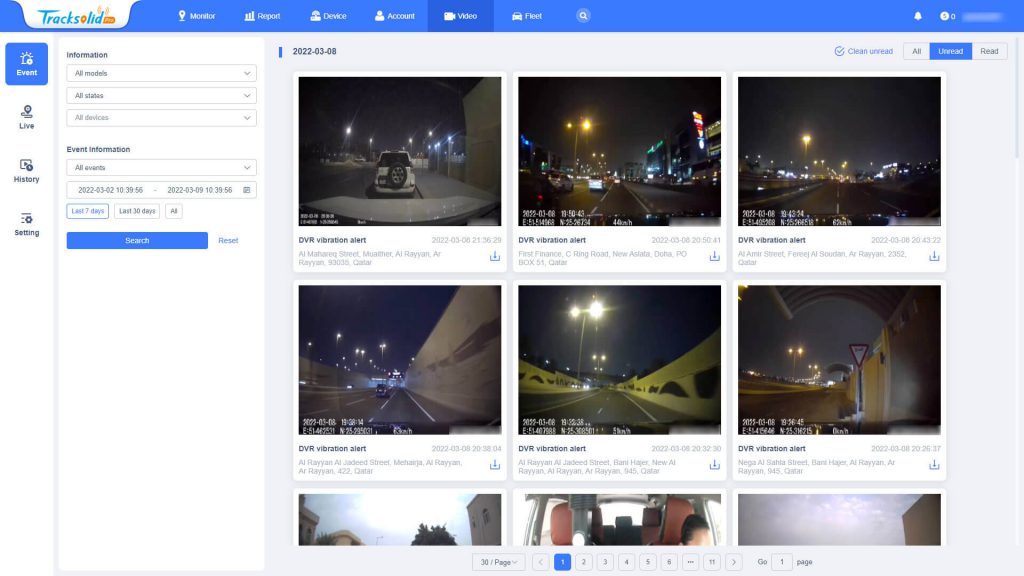Are you thinking about buying a dash cam? That’s a great idea! Dash cams are becoming more and more popular nowadays as they offer many benefits, including providing evidence in case of an accident, deterring criminals, and capturing beautiful scenery on road trips. But when it comes to choosing a dash cam, one of the questions that often arises is: should the angle of a dash cam be as big as possible? Is bigger better? Let’s take a closer look at this topic.
Firstly, let’s define what we mean by “angle.” The angle of a dash cam refers to the field of view that the camera can capture. A wider angle means that the camera can capture more of the scene in front of it. For example, a 120-degree angle means that the camera can capture everything within a 120-degree field of view.
So, is a bigger angle better? In general, a wider angle can be beneficial when it comes to capturing more of the scene in front of the camera. This can be especially useful if you frequently drive on busy roads or in areas with lots of traffic. With a wider angle, you may be able to capture more of what’s happening around you, which can be helpful in case of an accident or other incident.
Additionally, a wider angle can be helpful if you want to capture footage of a scenic drive. With a wider angle, you can capture more of the scenery around you, which can be especially useful if you’re atravel enthusiast or a professional driver who wants to document their journeys. A bigger angle can also be useful if you want to capture footage of your car’s interior, such as if you’re an Uber or Lyft driver.
Why a Dash Cam Larger Angle Isn’t Always Better
While many people believe that a larger angle is always better when it comes to dash cams, this isn’t necessarily true. Here are some reasons why a larger angle may not always be the best option:
- Distortion: When the angle of a dash cam is too wide, it can lead to distortion in the video footage. This can make it difficult to see important details such as license plates or road signs.
- Image Quality: Generally, the larger the angle of the camera, the lower the image quality. This can mean that the video footage is blurry or pixelated, making it harder to see details.
- Cost: Dash cams with a larger angle tend to be more expensive than those with a narrower angle. If you’re on a budget, a dash cam with a smaller angle may be a more affordable option.
- Camera Placement: The placement of the camera is also an important consideration when it comes to the angle. If the camera is placed too high or too low, a wider angle may not provide much benefit.
Simply put, there are also some downsides to a wider angle. Firstly, a wider angle can sometimes result in distortion around the edges of the frame. This can make the footage look warped or stretched, which can be a concern if you’re trying to capture accurate footage of an incident. Additionally, a wider angle may require a higher resolution in order to capture clear footage. This can drive up the cost of the dash cam, especially if you’re looking for a device with advanced features like night vision or GPS.
So, is bigger always better when it comes to the angle of a dash cam? Not necessarily. While a wider angle can be beneficial in certain situations, it’s important to consider the other factors that are important to you, such as resolution, storage capacity, and price.

When shopping for a dash cam, here are a few other factors to keep in mind:
- Quality of footage: The resolution and frame rate of the camera can impact the quality of the footage. Look for a dash cam with at least 1080p resolution and a frame rate of 30 frames per second (fps) or higher.
- Storage capacity: Dashcams record footage onto a memory card, so it’s important to have enough storage space to capture all the footage you need. Look for a dash cam that supports high-capacity memory cards (at least 64GB) or has built-in storage.
- Night vision: Many accidents happen at night, so having a dash cam with good low-light performance is essential. Look for a dash cam with infrared LEDs or other night vision features.
- GPS: Some dash cams have GPS built-in, which can provide useful information like speed and location. This can be helpful if you need to prove your innocence in an accident.
- Smart features: Some dash cams offer advanced features like lane departure warnings, collision detection, and parking mode. These features can be useful, but they may also drive up the cost of the device.

Ultimately, when it comes to choosing a dash cam, it’s important to consider all the factors that are important to you. A wider angle can be beneficial in certain situations, but it’s not the only factor to consider. It’s also important to consider the quality of the footage, storage capacity, night vision capabilities, GPS, and smart features. By taking all of these factors into account, you can choose a dash cam that meets your specific needs and budget.
In conclusion, the angle of a dash cam is an important factor to consider when choosing a device. While a wider angle can be beneficial in certain situations, it’s not always necessary. It’s important to consider all the factors that are important to you, such as resolution, storage capacity, night vision capabilities, GPS, and smart features. By doing your research and choosing a device that meets your specific needs, you can enjoy peace of mind on the road and capture unforgettable moments along the way.
 US
US ES
ES PT
PT TH
TH VN
VN JP
JP


